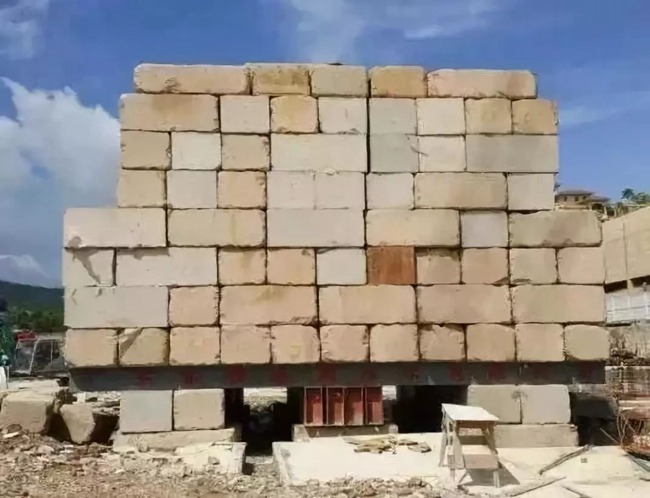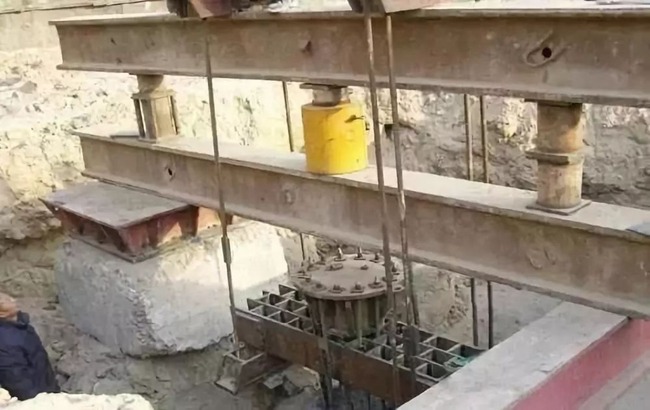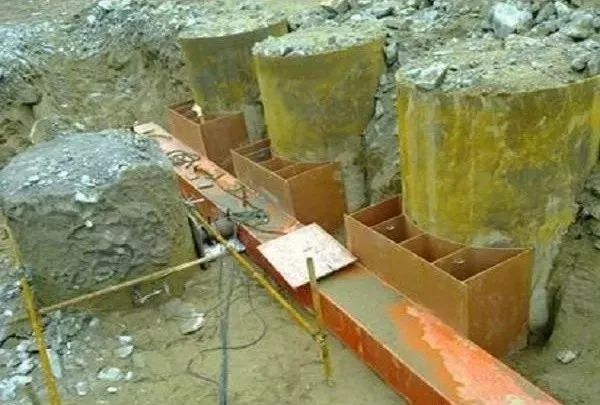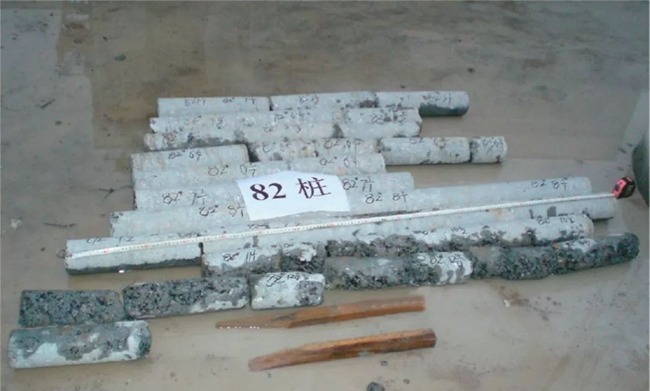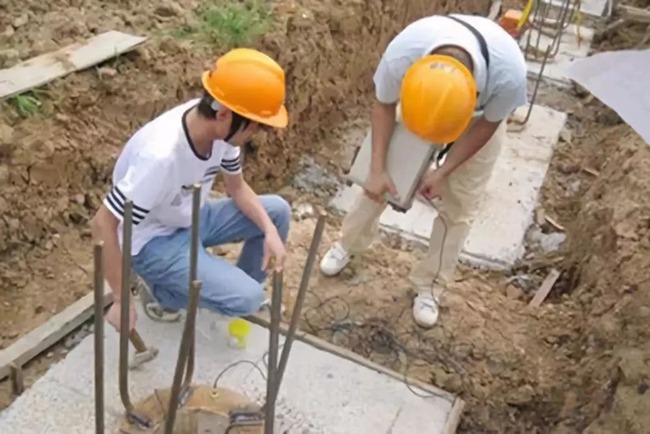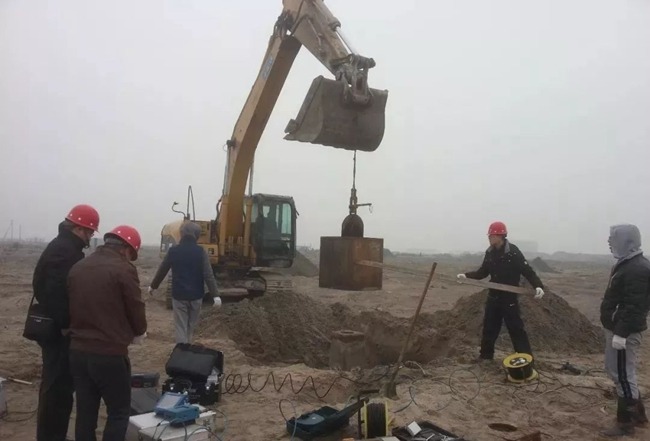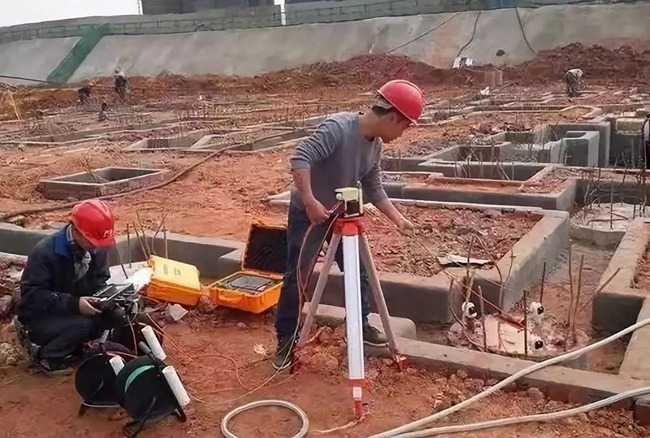Pile foundation testing is divided into pre-construction and post-construction testing of pile foundations: before construction, test pile testing provides a basis for design, mainly to determine the ultimate bearing capacity of a single pile; after construction, engineering pile testing provides a basis for acceptance, mainly Conduct single pile bearing capacity and pile integrity testing.
1. Single pile vertical compressive static load test
The vertical static load test of a single pile refers to transmitting the vertical load evenly to the foundation pile of the building. By measuring the pile top settlement of the single pile under different loads, the Q-s curve and s-lgt of the static load test are obtained. Wait for the auxiliary curve, and then deduce parameters such as the characteristic value of the single pile vertical compressive bearing capacity based on the curve.
Purpose: Determine the ultimate vertical compressive bearing capacity of a single pile; determine whether the vertical compressive bearing capacity meets the design requirements; measure the pile side and pile end resistance through pile body strain and displacement tests, and verify the vertical compressive bearing capacity of a single pile using the high strain method. Pressure bearing capacity test results.
2. Single pile vertical pullout static load test
The vertical pull-out force is applied step by step on the top of the pile, and the pull-out displacement at the top of the pile is observed over time to determine the corresponding vertical pull-out bearing capacity of a single pile.
Purpose: To determine the vertical pullout ultimate bearing capacity of a single pile; to determine whether the vertical pullout bearing capacity meets the design requirements; and to measure the pile’s pullout lateral resistance through pile body strain and displacement tests.
3. Single pile horizontal static load test
A method that is close to the actual working conditions of horizontal stress piles is used to determine the horizontal bearing capacity of a single pile and the horizontal resistance coefficient of the foundation soil, or a test method to inspect and evaluate the horizontal bearing capacity of engineering piles. The single-pile horizontal load test should use the one-way multi-cycle loading and unloading test method. When the pile body stress or strain needs to be measured, the slow-speed maintenance load method should be used.
Purpose: Determine the horizontal critical and ultimate bearing capacity of a single pile, and infer soil resistance parameters; determine whether the horizontal bearing capacity or horizontal displacement meets the design requirements; and measure the bending moment of the pile body through pile body strain and displacement tests
4. Core drilling method
The core drilling method mainly uses a drilling machine (generally with an inner diameter of 10mm) to core-sample the pile foundation. Based on the core samples taken, the length of the pile foundation, concrete strength, sediment thickness at the bottom of the pile, and the condition of the bearing layer can be analyzed. Make clear judgments.
Purpose: To test the length of the cast-in-place pile, the concrete strength of the pile body, and the sediment thickness at the bottom of the pile, to determine or identify the rock and soil properties of the bearing layer at the pile end, and to determine the integrity category of the pile body.
5. Low strain method
The low-strain detection method uses a small hammer to hit the top of the pile and receives the stress wave signal from the pile through a sensor bonded to the top of the pile. It uses stress wave theory to study the dynamic response of the pile-soil system and inversely analyzes the measured velocity signal. frequency signal to obtain pile integrity.
Purpose: To detect pile body defects and their locations, and to determine the pile integrity category.
6. High strain method
The high strain detection method is a method to detect the integrity of the pile body of the pile foundation and the vertical bearing capacity of a single pile. This method uses a heavy hammer weighing more than 10% of the weight of the pile body or more than 1% of the vertical bearing capacity of a single pile. Hit the top of the pile with a free fall to obtain the relevant dynamic coefficients. Apply the prescribed procedures to analyze and calculate to obtain the pile integrity parameters and single pile vertical bearing capacity. It is also called the Case method or Cap-wipe method.
Purpose: Determine whether the vertical compressive bearing capacity of a single pile meets the design requirements; detect pile defects and their locations, determine the pile integrity category; analyze pile side and pile end soil resistance; and monitor the pile driving process.
7. Acoustic transmission method
The acoustic penetration method is to embed several acoustic tubes in the pile before pouring the pile foundation concrete, which serves as channels for ultrasonic pulse transmitting and receiving probes. The ultrasonic detector is used to measure the penetration of the ultrasonic pulse point by point along the longitudinal axis of the pile. The acoustic parameters at each cross-section are then processed using various specific numerical criteria or image judgments. After processing, the pile defects and their locations are given, and the pile integrity category is determined.
Purpose: To detect defects and locations of cast-in-place piles and determine the type of pile integrity.
Key Points for Implementation of Pile Foundation Inspection
Conditions for selecting piles to be inspected for acceptance testing:
(1) Piles with questionable construction quality;
(2) Piles with abnormal local foundation conditions;
(3) Select some Class III piles during bearing capacity acceptance;
(4) Piles deemed important by the designer;
(5) Piles with different construction techniques;
(6) It should be selected evenly and randomly according to regulations.
During the acceptance test, the pile integrity test should be carried out first, and then the bearing capacity test should be carried out. Pile integrity testing should be carried out after the excavation of the foundation pit.
The pile body integrity is classified into four categories: Type I piles, Type II piles, Type III piles, and Type IV piles. Type I piles have a complete pile body; Type II piles have slight defects in the pile body, which will not affect the normal bearing capacity of the pile structure; Type III piles have obvious defects in the pile body, which have an impact on the pile structure bearing capacity; Type IV piles There are serious flaws in the body.
The characteristic value of the vertical compressive bearing capacity of a single pile should be taken as 50% of the ultimate vertical compressive bearing capacity of a single pile. The characteristic value of the vertical pull-out bearing capacity of a single pile should be taken as 50% of the ultimate vertical pull-out bearing capacity of a single pile. Determination of the characteristic value of the horizontal bearing capacity of a single pile: First, when the pile body is not allowed to crack or the reinforcement ratio of the cast-in-place pile is less than 0.65%, 0.75 times the horizontal critical load is taken; second, for reinforced concrete precast piles, steel piles and piles For cast-in-place piles with a body reinforcement ratio of not less than 0.65%, the load corresponding to the horizontal displacement at the design pile top elevation is 0.75 times (horizontal displacement value: 6mm for buildings sensitive to horizontal displacement, 10mm for insensitive buildings, to meet the requirements of the pile Body crack resistance requirements).
When using the core drilling method, the number and location requirements of the drilled holes for each pile to be inspected: 1 to 2 holes for piles with a pile diameter less than 1.2m; 2 holes for piles with a pile diameter of 1.2 to 1.6m; Piles with a diameter greater than 1.6m should have three holes; the drilling positions should be evenly and symmetrically arranged within the range of (0.15~0.25) D from the center of the pile.
Thanks

